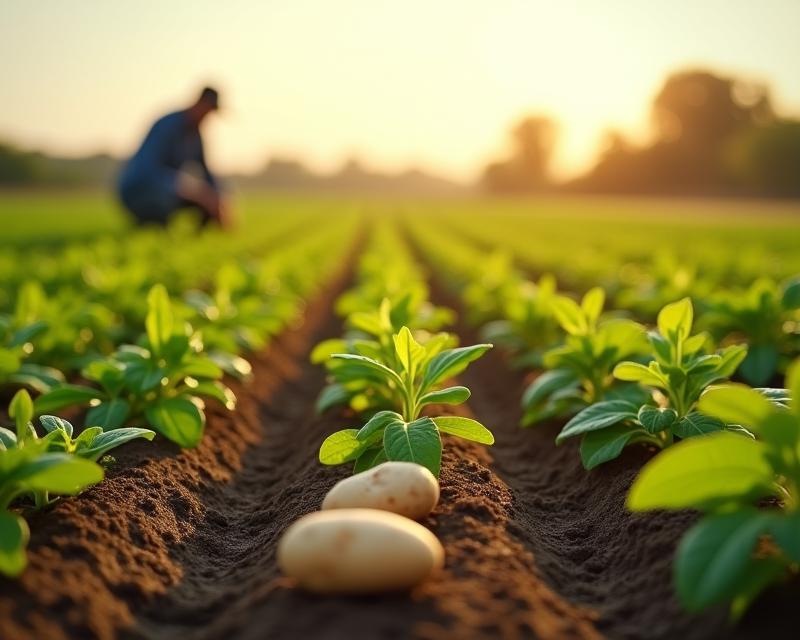GMO Potatoes: A Closer Look
Publish in Crops el 21/07/2025 20:16
GMO Potatoes: A Closer Look
Potatoes are a staple food for many, and farmers are constantly looking for ways to improve yields and reduce losses. Genetic engineering (GE), also known as GMOs, has played a significant role in developing potato varieties with enhanced traits. One of the most notable advancements is the creation of disease-resistant and less-bruising potatoes. But what exactly does this mean for you, the farmer or gardener?

Disease Resistance: A Major Benefit
Traditionally, potato farmers have battled a variety of diseases, like late blight, which can devastate crops. These diseases can lead to significant yield losses and require costly treatments. GMO technology allows scientists to insert genes into potato plants that provide resistance to these diseases. For example, potatoes engineered with genes from the *Streptomyces scabiei* bacterium are resistant to common scab, a soil-borne disease that causes unsightly lesions on the potato skin. This reduces the need for fungicides, saving you money and promoting healthier crops.
Reduced Bruising: Less Waste, More Profit
Bruising is a major concern for potato growers and distributors. Damaged potatoes are less marketable and have a shorter shelf life. Genetic engineering has led to the development of potatoes with reduced bruising tendencies. This is achieved by modifying the plant's cell structure and composition, making the skin more resilient. Less bruising translates directly into less waste, higher profits, and a more sustainable farming operation. Imagine fewer rejected potatoes and a happier bottom line!
How is it Done?
The process of creating GMO potatoes involves identifying genes responsible for desirable traits – like disease resistance or reduced bruising – and then inserting those genes into the potato's DNA. This isn't simply adding a gene from another potato variety; it's a precise insertion of specific genetic material. The resulting plants are then carefully tested to ensure the desired traits are present and that the GMO is safe for consumption. Rigorous regulations and safety assessments are in place to ensure the responsible development and use of GMO crops.
What Does This Mean for You?
GMO potatoes offer farmers and gardeners a powerful tool to improve crop yields, reduce losses, and enhance profitability. While there are ongoing discussions and debates surrounding GMOs, the scientific consensus is that currently available GMO potatoes are safe to eat. By incorporating these improved varieties into your farming or gardening practices, you can contribute to a more efficient and sustainable food system. It's worth researching the available GMO potato varieties and considering how they might benefit your operation. Consult with your local agricultural extension office for more information and guidance.
- Increased Yields
- Reduced Chemical Use
- Improved Shelf Life
- Enhanced Profitability





